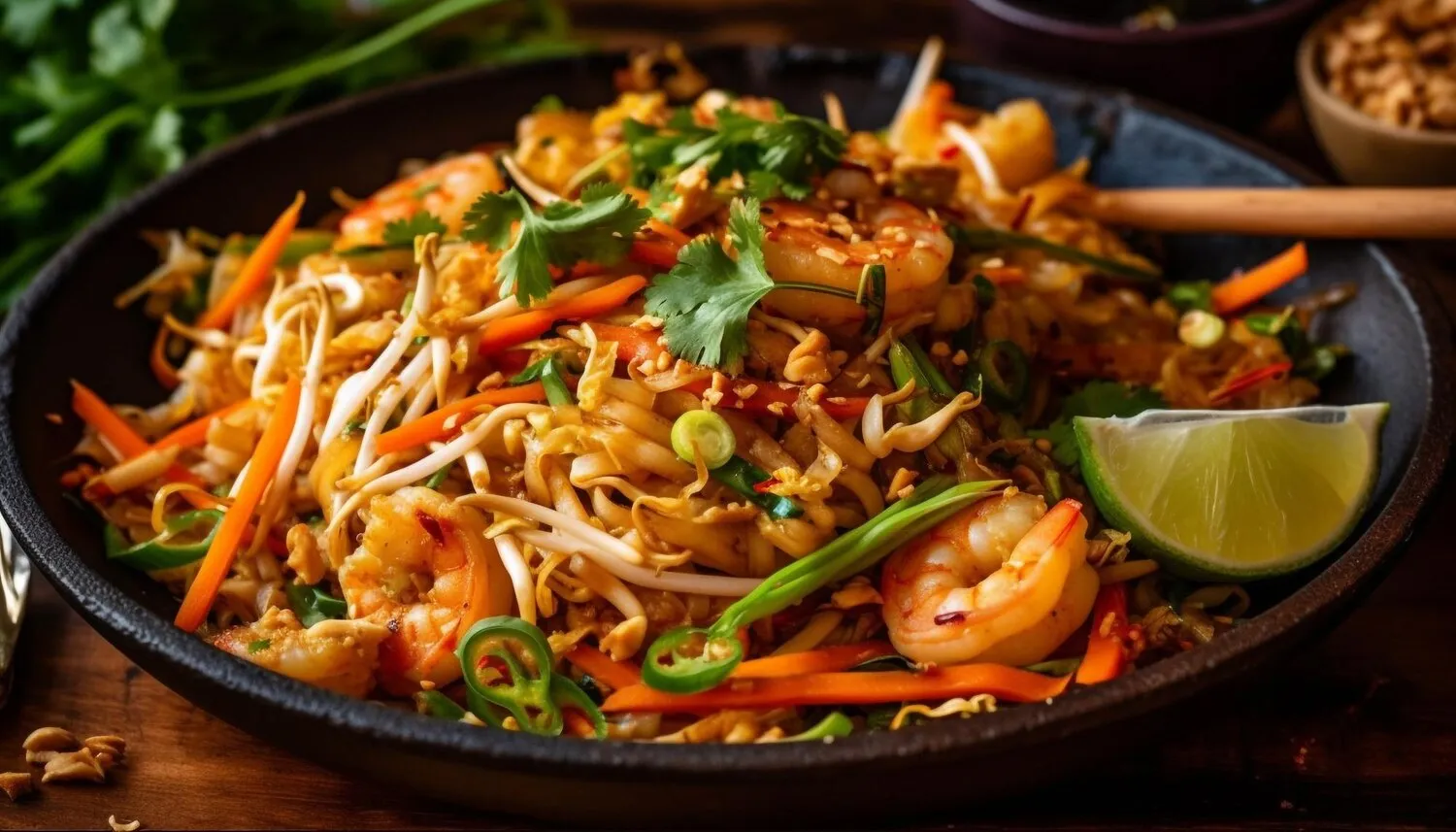
Kai Pad Med Mamuang
Chicken with cashew nuts, pineapple, paprika, onion and spring onion.
Nutrition Facts
* The % Daily Value (DV) tells you how much a nutrient in a serving of food contributes to a daily diet. 2,000 calories a day is used for general nutrition advice.
The dish likely evolved through the blending of Thai cuisine with influences from Chinese traders and immigrants, particularly the use of stir-frying techniques. The cashew nuts, while not native to Thailand, became readily available through trade and were incorporated into various Thai dishes. The chili paste is a hallmark of Thai cuisine, showcasing its ability to mix spices and flavors.
Kai Pad Med Mamuang is a popular and versatile dish widely enjoyed in Thailand and internationally. It is often found on the menus of Thai restaurants worldwide, showcasing the accessibility and appeal of Thai cuisine. Its balance of flavors makes it a crowd-pleaser suitable for a variety of palates.
Restaurant Staple
This dish is a common offering in most Thai restaurants, both in Thailand and abroad, indicating its widespread popularity and acceptance as a classic Thai dish.
Family Friendly
Due to the controllable spice level and appealing flavors, Kai Pad Med Mamuang is often enjoyed by families, including children, making it a versatile meal choice.
Adaptability
The recipe can be easily adapted to include different vegetables or protein sources to suit individual preferences or dietary restrictions, demonstrating its flexibility within Thai cooking principles.
Kai Pad Med Mamuang boasts a complex flavor profile that is simultaneously savory, sweet, spicy, and slightly tangy. The textures range from the tenderness of the chicken to the crunchy cashews and crisp-tender vegetables.
The core flavors derive from the combination of stir-fried chicken (Kai), crunchy cashew nuts (Med Mamuang), a variety of vegetables such as bell peppers, onions, carrots, and mushrooms, and a sweet and spicy chili paste. The chili paste, often made with roasted chilies, garlic, shallots, and shrimp paste, provides the base heat and depth. Fish sauce and soy sauce contribute umami and saltiness, while palm sugar adds sweetness. Often oyster sauce is added to enhance flavors. Some recipes incorporate dried chilies to increase the spicy heat of the dish. A touch of vinegar or tamarind paste provides a subtle tang.
Wok Hei
Use high heat and a wok for optimal stir-frying, achieving the characteristic 'wok hei' (breath of the wok) which imparts a slightly smoky flavor.
Cashew Perfection
Roast the cashew nuts briefly before adding them to the dish to enhance their flavor and crispness. Be careful not to burn them.
Sauce Balance
Adjust the sweetness, saltiness, and spiciness of the sauce to your taste. Taste and adjust as you go.
Vegetable Freshness
Don't overcook the vegetables. They should be crisp-tender, retaining their vibrant color and texture.
Explore additional Thai dishes and restaurants
Explore ThaiDiscover top dining spots and culinary experiences in Arnhem.
Explore ArnhemLearn more about the food culture, restaurant scene, and culinary heritage of Netherlands.
Explore Netherlands